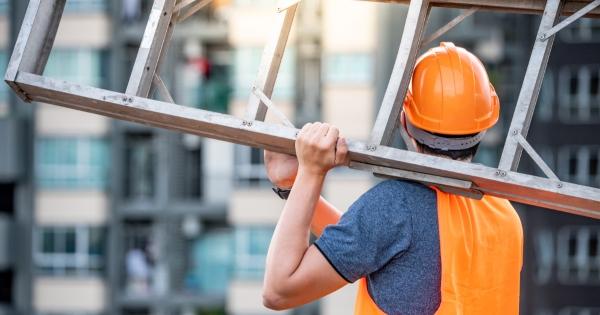Your Safety Matters Most

By Lauren White, RCS Reporter.
Know what to do and how to stay safe when faced with a hurricane.
September is when hurricanes are most active. According to FEMA Hurricane Preparedness, “Hurricanes are massive storm systems that form over warm ocean waters and move toward land. Potential threats from hurricanes include powerful winds, heavy rainfall, storm surges, coastal and inland flooding, rip currents, tornadoes, and landslides.” It’s important to know how to prepare yourself and your home or business.
With hurricane season in full force, Tropical Roofing Products is encouraging those, “...affected by hurricanes to prepare and stay safe during and after the storm passes.” Based in Hallandale, Florida, this national company is prepared to help hurricane survivors. Tropical Roofing Products is fully “...stocked and ready to ship your roof repair and restoration coatings.”
For 60 years they have specialized in manufacturing creative solutions and technologies to help maintain roof longevity. They offer fluid-applied roof restoration coatings and systems that help building owners and facility managers, “...avoid costly, time-consuming and disruptive roof tear-offs and to realize their goal of achieving long-term roof performance and the lowest roof life cycle cost,” according to their website. Their products effectively seal, waterproof, and maintain the roof.
Tropical Roofing Products shared FEMA’s hurricane preparedness steps in order to stay safe before, during, and after the hurricane. Protect yourself and your home or business with these tips and guidelines.
First and foremost, find shelter immediately if you’re under a hurricane warning. This could be an interior room to protect you from high winds, or a designated storm shelter. Evacuate if told to do so. FEMA suggests that you, “Turn around, don’t drown!” Avoid walking, swimming, or driving through floodwaters as it is extremely dangerous. “Just six inches of fast-moving water can knock you down, and one foot of moving water can sweep your vehicle away,” reveals FEMA.
Flooding can initially happen from the storm surge, which is when water from the ocean is pushed towards the shore by the winds of the hurricane. When a storm surge occurs, it’s possible for 20 or more feet of water to be pushed to shore and several miles inland. Storm surge destroys anything in its path and is extremely dangerous for people to be in. According to FEMA, “Storm surge is historically the leading cause of hurricane-related deaths in the United States.” Storm surge can cause massive destruction to buildings, roads, foundations, and the coastline. “Just one inch of water can cause $25,000 of damage to your home. Homeowners and renter’s insurance does not typically cover flood damage,” FEMA shares.
How can you prepare now? Have an evacuation plan or a plan for sheltering in place. Additionally, gather supplies for at least three days, including medications and pet supplies, if applicable. Around the house, review your insurance policy, look into hurricane shutters, declutter all drains and gutters, and install check valves in plumbing.
There are preparations that can be made 36 hours before the hurricane arrives. The first is coming up with a plan for communicating with family in case the power goes out. Calling, texting, emailing, or using social media are all viable options. However, texting might be the most reliable considering phone lines become overloaded during disasters. The other preparation concerns your insurance policy if you have National Flood Insurance Program (NFIP) flood insurance. FEMA shares, “...your policy may cover up to $1,000 in loss avoidance measures, like sandbags and water pumps, to protect your insured property.” Be sure to keep copies of receipts and record the amount of time you spent working in preparation. This documentation can be sent to your insurance adjuster when you file a claim to be reimbursed.
When the hurricane is 18-36 hours from arriving, it’s recommended that you cover all windows in your home. FEMA explains, “Permanent storm shutters offer the best protection for windows. A second option is to board up windows with ⅝” exterior grade or marine plywood, cut to fit and ready to install.”
Six hours from arrival, FEMA recommends, “If you’re not in an area that is recommended for evacuation, plan to stay at home or where you are and let friends and family know where you are.” Close storm shutters or check on window coverings. Avoid windows since flying glass could harm you.
During the storm, evacuate immediately if told to do so. Avoid driving around barricades or going on bridges that are over fast-moving water. FEMA advises, “If sheltering during high winds, go to a FEMA safe room, ICC 500 storm shelter, or a small, interior, windowless room or hallway on the lowest floor that is not subject to flooding.” Go to the highest level of the building if you’re in one that begins to flood. Avoid closed attics though as you could become trapped by the floodwater.
Your safety is just as important after the storm has passed. Use text message or social media to contact friends and family since phone lines may be overloaded or inoperable. In order to stay safe during clean up, work with others and wear protective clothing. FEMA suggests that you, “Do not touch electrical equipment if it is wet or if you are standing in water. If it is safe to do so, turn off electricity at the main breaker or fuse box to prevent electric shock.” Take photos of any property damage and contact your insurance company for assistance.
Tropical Roofing Products and FEMA have your safety in mind. These are only some of the safety precautions you can take. More can be found on FEMA’s Hurricane Preparedness website. And Tropical Roofing Products has what you need after the storm for any roof repairs, coatings for restoration and maintenance, and cements and mastics.
For more information, visit www.tropicalroofingproducts.com or call 800-432-2855.























Comments
Leave a Reply
Have an account? Login to leave a comment!
Sign In